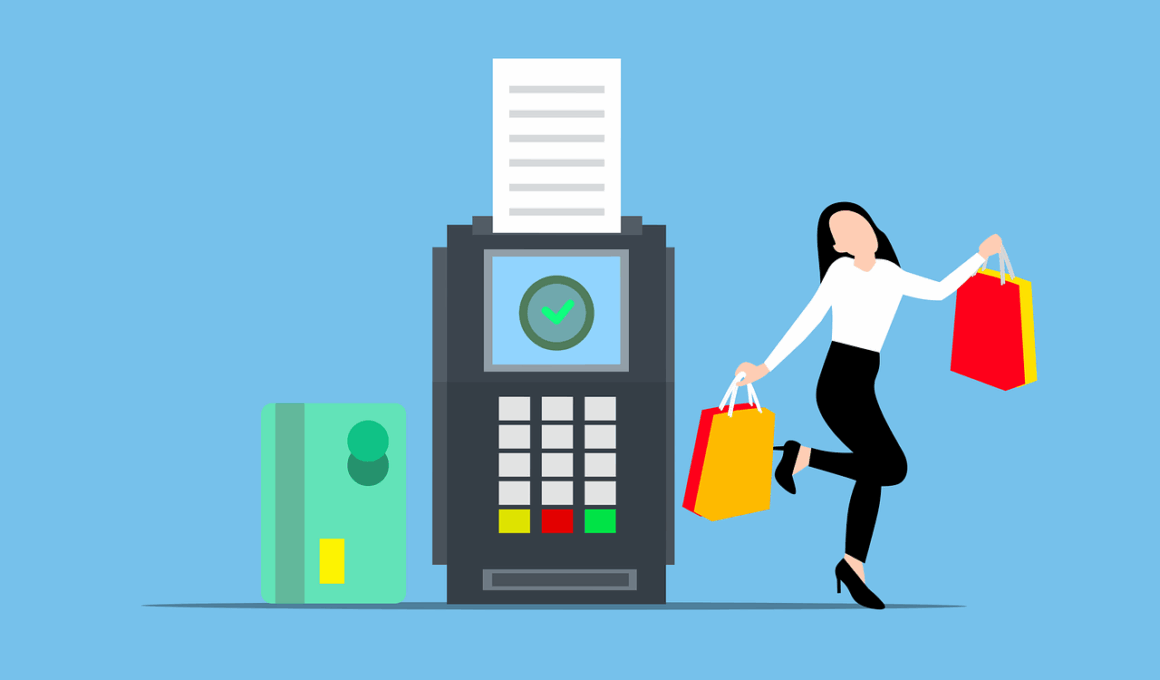Emerging Payment Methods That Retailers Should Adopt
With the rapid evolution of technology in the retail sector, digital payment innovations are continually changing the landscape of commerce. Retailers must stay competitive by adopting these methods, which enhance customer experiences while ensuring security and efficiency. Digital wallets are particularly significant in this context, providing a convenient way for consumers to pay using their smartphones. Platforms like Apple Pay and Google Pay allow customers to store multiple credit and debit cards, providing flexibility and ease during transactions. Moreover, businesses can benefit from lower transaction fees associated with digital wallets compared to traditional credit card processing. Another key innovation is the integration of contactless payments, which speeds up the checkout process. Customers can simply tap their cards or phones against payment terminals, drastically reducing wait times. Retailers who implement these systems can not only improve customer satisfaction but also increase throughput during peak shopping hours. Security features in these payment methods, like encryption and biometric authentication, strengthen transaction safety, which is vital for maintaining consumer trust in the digital payment ecosystem.
Cryptocurrency adoption is an emerging trend among retailers that should not be overlooked. As more customers embrace digital currencies such as Bitcoin and Ethereum, retailers can position themselves as forward-thinking by incorporating these payment methods into their operations. Providing options for cryptocurrency payments can attract a niche market of tech-savvy customers wishing to utilize their digital assets in everyday transactions. Startups like BitPay and Coinbase Commerce facilitate these transactions, allowing businesses to accept cryptocurrencies with ease. These payment solutions typically feature real-time conversion capabilities, making it easier for retailers to manage the conversion of digital currency into local fiat currencies. As with any emerging payment method, businesses must weigh the benefits against volatility and regulatory concerns associated with cryptocurrencies. It is essential to implement risk management strategies when considering this type of payment option. Retailers should also educate their staff about the benefits and challenges inherent in cryptocurrency transactions, ensuring a smooth implementation that aligns with their overall financial strategy. By offering diverse payment options, retailers are better equipped to cater to the evolving preferences of consumers and stand out in a competitive marketplace.
Buy Now, Pay Later (BNPL) Solutions
Buy Now, Pay Later (BNPL) services have witnessed a massive surge in popularity within the retail sector. These payment solutions offer customers the chance to make purchases and pay for them later in installments. Retailers that incorporate BNPL options can effectively increase their average transaction value, as customers are more likely to make larger purchases when they are not required to pay upfront. Services such as Afterpay and Klarna have become household names, providing seamless integration into retail businesses. These services also help improve customer loyalty, as buyers appreciate the ability to manage their budgets more flexibly. Retailers should carefully choose BNPL partners that support transparent fee structures, ensuring that customers are fully informed about terms and conditions before making purchases. It is crucial to highlight the availability of these payment options in marketing materials, as it can serve as an incentive for customers hesitant to spend due to cash flow concerns. Additionally, by analyzing sales data, businesses can continuously optimize their offering of BNPL solutions to enhance customer satisfaction and drive conversion rates, ultimately leading to better business outcomes.
Mobile payment platforms are rapidly gaining traction among consumers, with retailers being encouraged to adopt these to stay competitive. The significant advantage of mobile payment apps is their ability to facilitate transactions anytime, anywhere, through smartphones. Popular apps like Venmo and Zelle not only provide ease of use but also foster a community-driven environment, allowing friends to exchange payments effortlessly. Retailers can leverage these platforms to offer promotions or special deals for users, thereby attracting a broader customer base. The integration of loyalty programs within mobile payment apps is another excellent opportunity for retailers to incentivize customers, encouraging repeat purchases. Additionally, utilizing mobile payments can streamline the checkout process and reduce labor costs by minimizing human error during transactions. Retailers should invest in reliable payment processing architectures that can handle mobile transactions smoothly and securely. Security is paramount; businesses must ensure that they are employing robust security measures to protect consumer data. Embracing mobile payment platforms as part of the retail framework not only enhances customer convenience but also drives operational efficiency, leading to overall business growth.
Tokenization for Enhanced Security
Tokenization is becoming an essential part of digital payment innovations, particularly in enhancing transaction security. This process replaces sensitive financial data with unique identification symbols or tokens that cannot be reverse-engineered. By implementing tokenization, retailers can ensure that customer payment information is protected, reducing the risk of data breaches and fraud. Many customers are growing increasingly concerned about the safety of their personal information when shopping online. Thus, adopting tokenization technology not only safeguards consumers but also builds trust in a brand’s security measures. Various payment processors, such as Stripe and PayPal, offer tokenization solutions, making it easier for retailers to integrate this technology into their operations. It is crucial for businesses to communicate the utilization of tokenization to consumers, highlighting the added layer of security that this method provides. Educating both staff and consumers about the benefits of tokenization can further increase its acceptance. As digital shopping continues to grow, retailers must prioritize implementing technologies that ensure customer data protection while also making payment transactions smoother and more efficient for comprehensive business success.
Augmented Reality (AR) is another innovative technology that retailers can leverage in conjunction with digital payments, enhancing the shopping experience. By incorporating AR, customers can visualize products in their own space before making a purchase, significantly improving decision-making. Retailers can integrate AR features into their mobile apps, allowing users to interact with their products virtually. For instance, furniture retailers can offer an AR experience where customers can see how different items would fit and look in their homes. When paired with seamless digital payment options, this technology can boost consumer confidence, leading to more purchases and reduced return rates. Furthermore, retailers should consider offering exclusive AR promotions that allow customers to unlock discounts when using specific payment methods. This approach can incentivize both the use of advanced technology and the adoption of digital payments. It is essential to continuously monitor customer engagement with AR features and optimize for refinement to ensure customer satisfaction. By embracing AR technology, retailers can create a unique shopping experience that fosters loyalty and drives sales, ultimately contributing to sustained business growth.
Final Thoughts on Payment Innovations
In conclusion, embracing emerging payment methods is not only a trend but a necessity for retailers seeking to enhance their competitiveness. By incorporating advanced digital payment solutions like mobile wallets, BNPL options, and tokenization, businesses can significantly improve their customer’s shopping experience. Retailers must stay abreast of the latest payment innovations to respond effectively to evolving consumer preferences. The implementation of AR technology further enriches the shopping journey, creating more engaging purchasing environments. Businesses should continually assess customer feedback regarding new payment methods to fine-tune their offerings. Additionally, investing in training staff allows teams to become proficient in these new technologies, ensuring customer inquiries can be efficiently addressed. As the retail landscape moves toward a more digital-centric approach, the ability to process payments securely, quickly, and conveniently will be paramount. By committing to digital payment innovations, retailers stand to strengthen their relationships with customers, improve overall satisfaction, and drive long-term loyalty. Ultimately, the future of retail payments lies in harnessing these cutting-edge methods while maintaining a strong focus on security and customer experience.
Each of these innovations presents retailers with distinct opportunities to not only attract new customers but also retain them through exceptional service and security. Integrating innovative payment options into the round-the-clock operations of retail helps businesses meet modern consumer expectations while enhancing operational efficiency. By understanding customer behavior and focusing on the advantages of digital transformation, retailers can craft strong strategies that solidify their authority in the marketplace. Logistics and payment integration are crucial elements that need continuous optimization, ensuring the business keeps pace with technological advancements. In a landscape marked by rapid change, the ability to adapt and innovate will ultimately determine a retailer’s success. Embracing these emerging payment methods is a strategic step toward responding to the evolving demands of tech-savvy consumers while capitalizing on the multitude of benefits such innovations bring to the table. Giving consumers a sense of control and flexibility in their payment choices will foster brand loyalty and drive sales. Retailers should not shy away from exploring these options, as the advantages far outweigh the challenges of implementation within a competitive environment.


